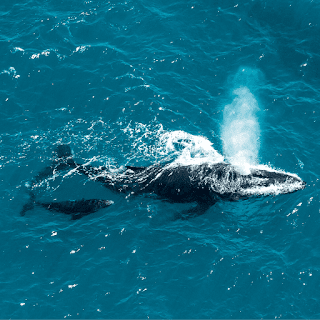Humpback Whales: The Great Migratory Mammoths
Humpback whales, well known for their hunting and melodic songs. It can grow up to a length of 60 feet with a life span ranging from 50 - 60 years. The sequences of moans, howls, and other noises are quite complex and often continue for hours.
During the early years of 1985, these have been reduced to very small numbers. The numbers have been improved but facing threats to entanglement in fishing gear, vessel strikes, and habitat impacts. They can be seen in all the oceans around the world. But, they migrate from time to time which gives them the name "the great migratory mammoths".
Migration
When it comes to migration, Hawaii is the fascinating world for ocean inhabitants, especially for humpback whales. They travel from Hawaii to Alaska to spend their summer in their feeding grounds. Mothers and young whales swim together where the calf craves for contact during their 1st year. Young humpback whales sleep on their mothers back.
The humpback whales mostly live near the equator, Arctic, and Antarctic waters and feed their bellies with large tons of small fish, salmon, and krill.
Orcas are the greatest threat to dolphins and whale calves. It calls male humpback to defend for her and her calf, which triggers massively male humpbacks who want to be a rightful champion.
Sometimes, a male sings a beautiful whale song to pierce the female. This draws other male rivals in order to become the champion. He does everything in his power to win the right to female whale and it's calf protector. They crash and push each other down in order to become the trusty protector.
These migratory mammoths will often come together after their long journey and dance.




Comments